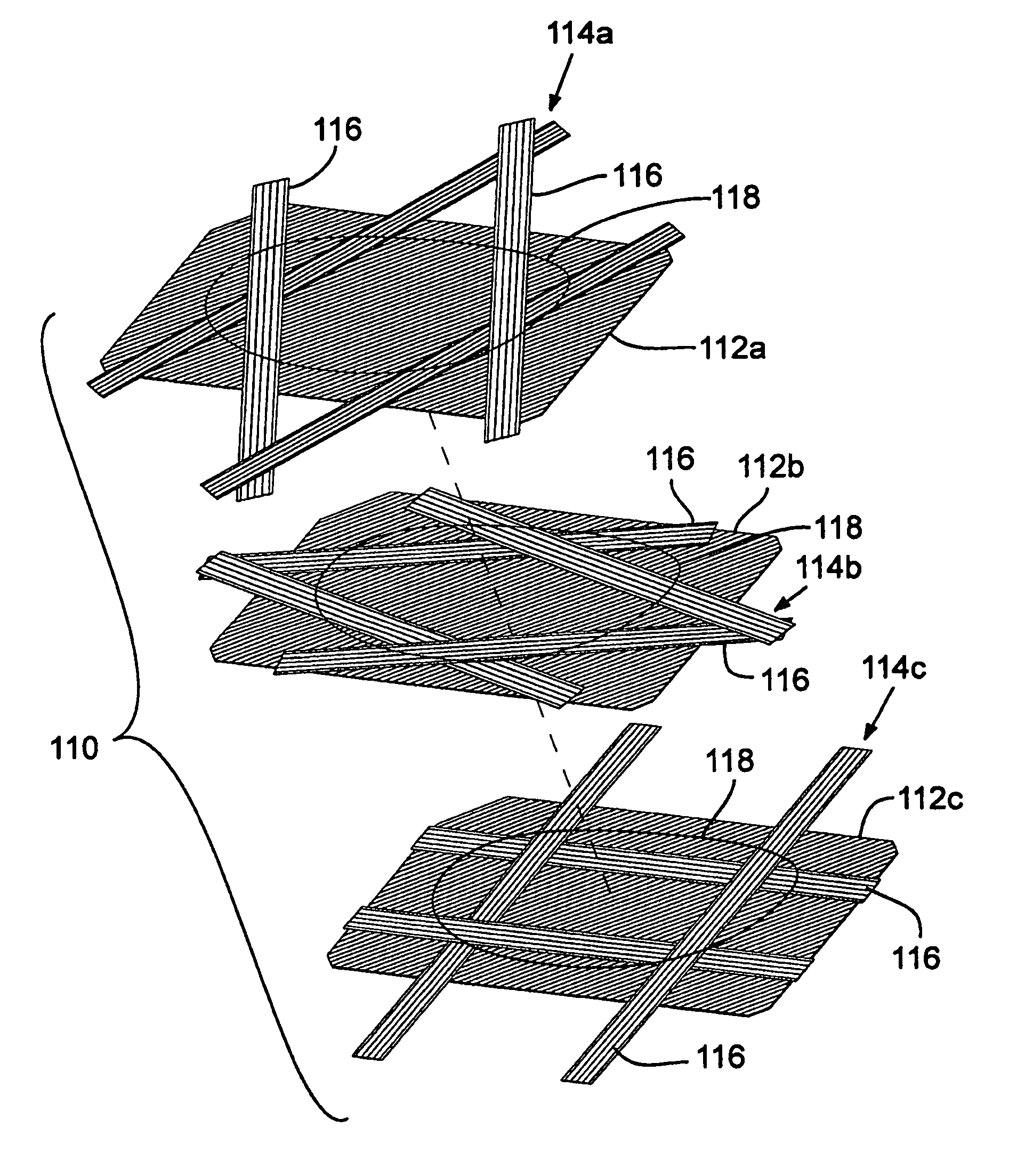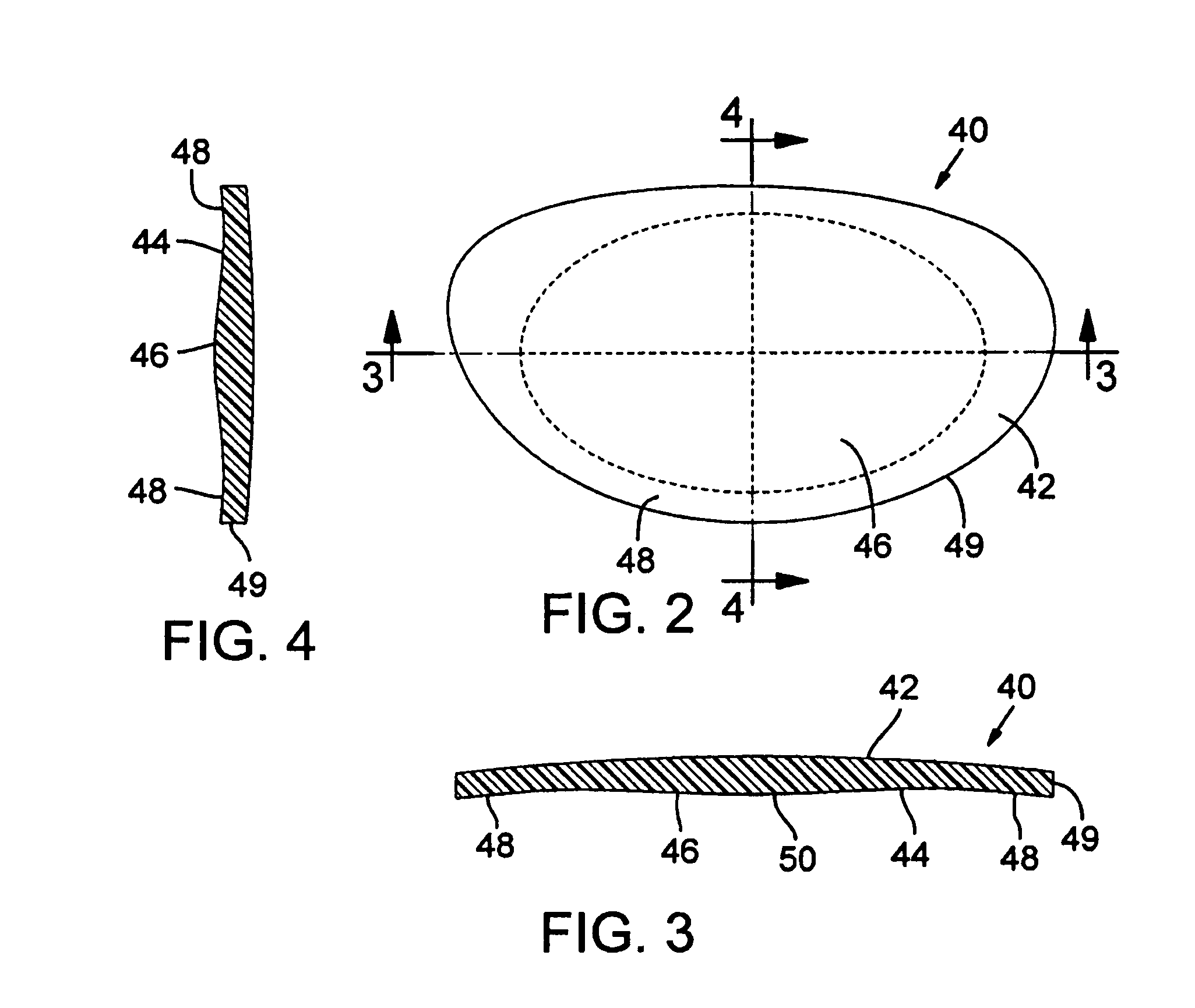Composite articles and methods for making the same
- Summary
- Abstract
- Description
- Claims
- Application Information
AI Technical Summary
Benefits of technology
Problems solved by technology
Method used
Image
Examples
example 1
In this example, a number of composite strike plates were formed using the strip approach described above in connection with FIGS. 2-9. A number of strike plates having a similar profile were formed using the partial ply approach described above. Five plates of each batch were sectioned and optically examined for voids. Table 1 below reports the yield of the examined parts. The yield is the percentage of parts made that did not contain any voids. As can be seen, the strip approach provided a much greater yield of parts without voids than the partial ply approach. The remaining parts of each batch were then subjected to endurance testing during which the parts were subjected to 3600 impacts at a ball speed of 50 m / s. As shown in Table 1, the parts made by the strip approach yielded a much higher percentage of parts that survived 3600 impacts than the parts made by the partial ply approach (72.73% vs. 52%). Table 1 also shows the average characteristic time (CT) (ball contact time wit...
example 2
In this example, a number of composite strike plates were formed using the strip approach described above in connection with FIGS. 2-9. A number of strike plates having a similar profile were formed using the partial ply approach above. Five plates of each batch were sectioned and optically examined for voids. Table 2 below reports the yield of the parts formed by both methods. As in Example 1, the strip approach provided a much greater yield of parts without voids than the partial ply approach (90% vs. 70%). The remaining parts of each batch were then subjected to endurance testing during which the parts were subjected to 3600 impacts at a ball speed of 42 m / s. At this lower speed, all of the tested parts survived 3600 impacts.
TABLE 2AverageNumber% ofMaxi-weightYieldCTPiecesof passingpassingmum(g)(%)(μs)testedpartspartsshotsStrip229025511111003600Partial21.57025816161003600ply
The methods described above provide improved structural integrity of the face plates and other club-head co...
example 3
As shown in FIGS. 18-19, a metallic cover can be provided so that a golf club striking plate includes a composite face plate and a metallic striking surface that tends to be wear resistant. A representative metallic cover 160 is illustrated in detail in FIGS. 20-23. Referring to FIG. 20, the metallic cover 160 provides a striking surface 161 that includes a central striking region 162 and a plurality of contrasting scorelines 164a-164j that are associated with respective dents, depressions, or indentations in the metallic cover that are generally filled with a contrasting pigment or paint such as white paint. Scorelines generally extend along an axis parallel to a toe-to-heel direction. In a representative example, scorelines have lengths of between about 6 mm and 14 mm, with scoreline lengths larger toward a golf club crown. The scorelines are spaced about 6-7 mm apart in a top-to-bottom direction. The arrangement of FIG. 20 is one example, and other arrangements can be used.
The me...
PUM
| Property | Measurement | Unit |
|---|---|---|
| Fraction | aaaaa | aaaaa |
| Thickness | aaaaa | aaaaa |
| Pressure | aaaaa | aaaaa |
Abstract
Description
Claims
Application Information
 Login to View More
Login to View More - R&D
- Intellectual Property
- Life Sciences
- Materials
- Tech Scout
- Unparalleled Data Quality
- Higher Quality Content
- 60% Fewer Hallucinations
Browse by: Latest US Patents, China's latest patents, Technical Efficacy Thesaurus, Application Domain, Technology Topic, Popular Technical Reports.
© 2025 PatSnap. All rights reserved.Legal|Privacy policy|Modern Slavery Act Transparency Statement|Sitemap|About US| Contact US: help@patsnap.com



